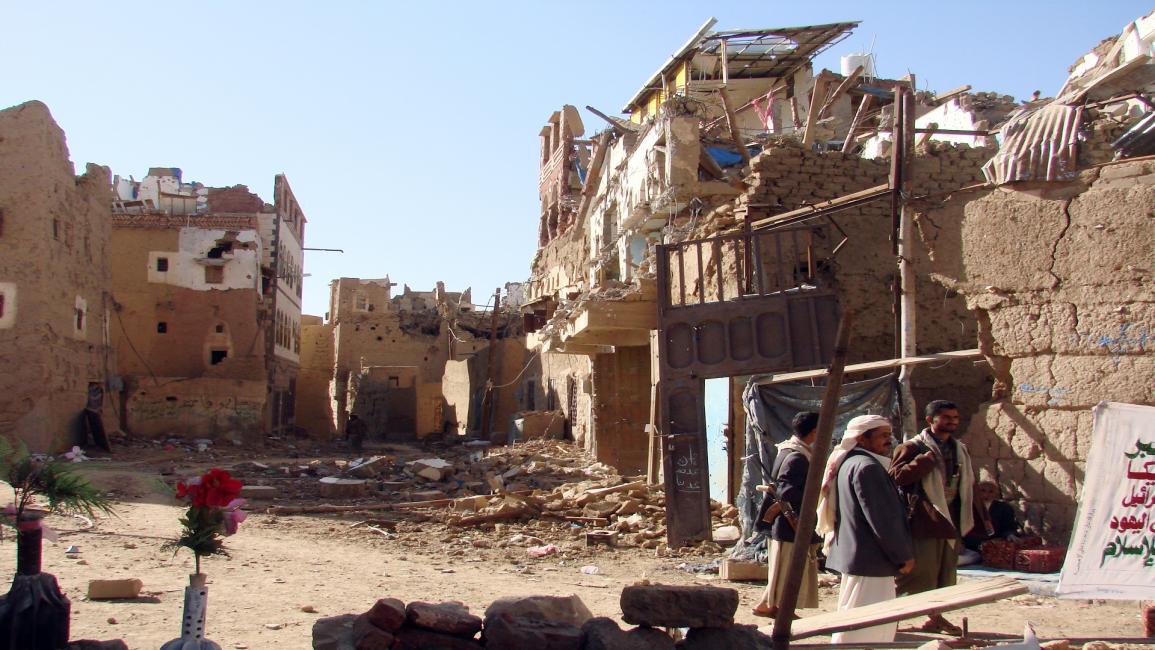Airstrikes target Houthi stronghold in Yemen's Saada
Since Operation Decisive Storm began, the stronghold of the forces of the Ansar Allah movement (commonly known as the Houthis) in Saada provience was placed at the top of the Arab coalition's targets in addition to the military camps loyal to the ousted president Ali Abdullah Saleh that are in charge of supplies and movements in Aden and its surroundings.
Saada was the target of the largest number of strikes, in more than one day. The raids concentrated on weapons warehouses and the training camps and gatherings of the group, in addition to the camps of the army that fell to the group's control and authority since 2011, as well as some of the group's houses and headquarters of government and institutions, the Houthi and the public communications networks, to reach finally gas stations.
The goal was to paralyse the group's interconnection, cut off its movements and weaken its capabilities to stand steadfast.
| Saada was the target of the largest number of strikes, on more than one day. |
A few days ago, the forces of the Decisive Storm Coalition have intensified their air strikes on the governorate at an unprecedented level, which raise questions about the potential damage inflicted on the Houthis in their stronghold base as the operations entered their fourth week and continued to concentrate on Saada, as well as questions about whether or not the Houthis are still capable to threaten the Saudi borders amidst news reports about their attempts to launch "quality" attacks on the Saudi borders.
Together with the air raids, the Saudi land forces were shelling the ranges of the border areas with artillery and rockets. The shelling targeted fixed and mobile targets of armed men who try to open fighting fronts at and infiltrate the borders in response to the air strikes.
According to the spokesman for the ten-member coalition Brigadier General Ahmad Hassan al-Asiri, the Houthis tried to bait Coalition forces into land battles on the borders, which is a development that the Saudi forces avoid because of the ruggedness of the border areas in which the Houthis are entrenched. Land military confrontations will benefit the Houthis and inflict losses on the attacking troops as it was manifested during the wars between the Houthis and the forces of the government of Yemen over the past years.
In view of the quality and the magnitude of the strikes in Saada, in particular those strikes that target communications and fuel stores, it is evident that the Houthi movement has become in an unenviable position, especially if there were human casualties among their fighters and leaders, which makes it difficult for them to stay put for a long time. However it is likely that the losses inflicted by the air strikes would not stop the Houthis from controlling the field and from reorganising.
A succession of wars
Nonetheless, a resident of Saada who had experienced the six wars told al-Araby al-Jadeed that the capabilities of the Houthis are tied to what would accompany the war.
If at the same time political and security action is taken to return the government agencies to Saada to keep an eye continuously on the Houthi activity and prevent their access to arms or to regroup as an armed force, the result would more likely be different and would move the Houthis towards political action away from arms.
| The Houthis started their intellectual and organisational activities in Saada in the 1990s. |
Six wars raged in Saada between the Houthis and the government, from which they acquired expertise and fortified the caves. Since 2011, the governorate had fell under their control exclusively. Because of the disturbances in the country and the political conflicts which preoccupied the government and the political parties in Sanaa, the Houthis were able during that period to obtain large and quality quantities of weapons and build fortifications and [military] camps, let alone seizing the control of five army brigades affiliated to the first armoured division, but have become practically besieged and controlled by the group during the past four years.
Saada is unique for its size, which exceeds 11,000 square kilometres, its rough geography, especially at the borders with Saudi Arabia. It is a doctrinal stronghold for the political Zaidi trend. In it the Houthis started their intellectual and organisational activity since the 1990s.
That activity developed into the "Youth of the Believers Organisation", which got armed to begin the first war in 2004, that was followed by five wars until 2010. In each of those wars they acquired expertise and weapons. It was naturally expected after that for the group to anticipate a seventh war or a Saudi campaign against it.
The kingdom had participated partially in the sixth war on the Houthis. The group has built and developed its capabilities during the past four years accordingly.
This could be sensed by the group's leader, Abdul Malek al-Houthi, who was careful not to leave Saada to any other governorate despite the expansion of his group in Sanaa and several other cities.
The Houthis in the governorates to which the group has expanded, such as Imran and Sana'a, are described as "Houthi converts" (ie. they are not an original doctrinal part of the group), with the presence of core Houthi political and doctrinal organisers in the various governorates. But Saada was the space in which the group moved for organization and indoctrination and it was the hotbed of their military power, contrary to the regular forces who are loyal to the ousted president Ali Abdullah Saleh or to the military camps which the Houthis seized and appointed commanders from their own ranks but nonetheless they are not secured completely for the Houthis.
This is an edited translation from our Arabic edition.



